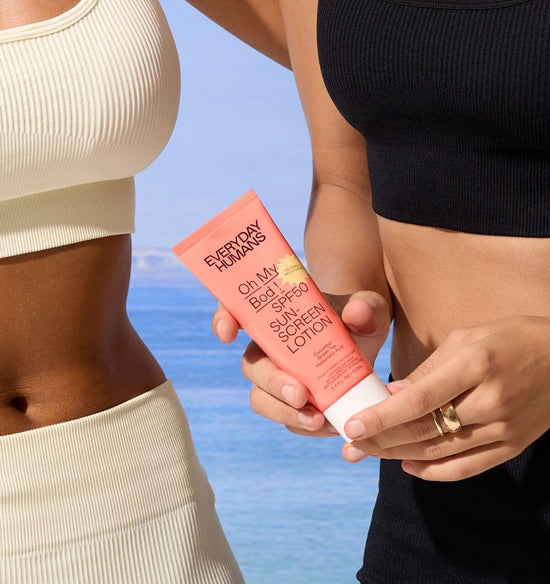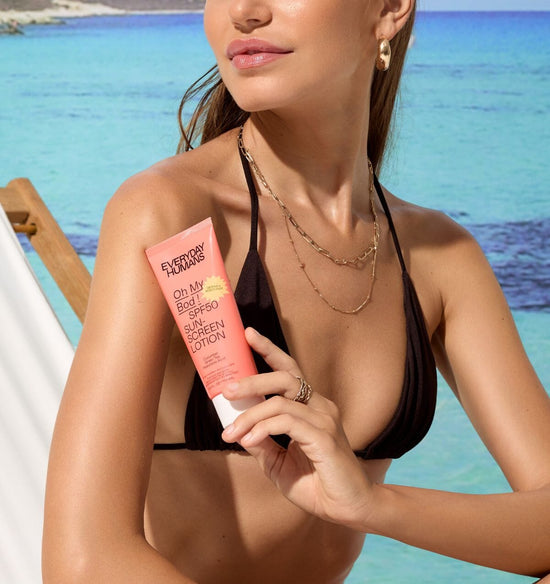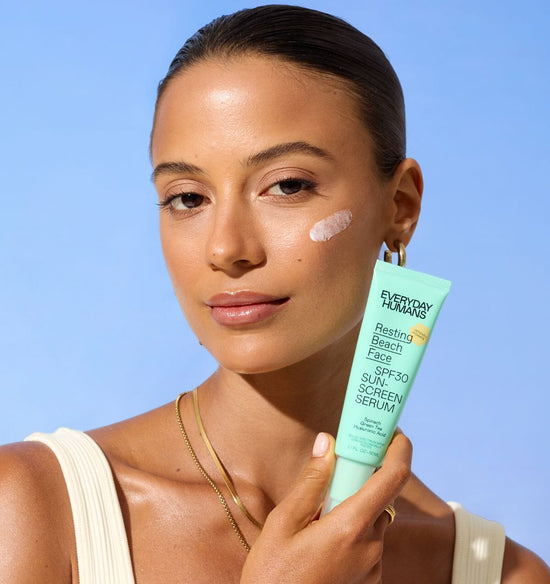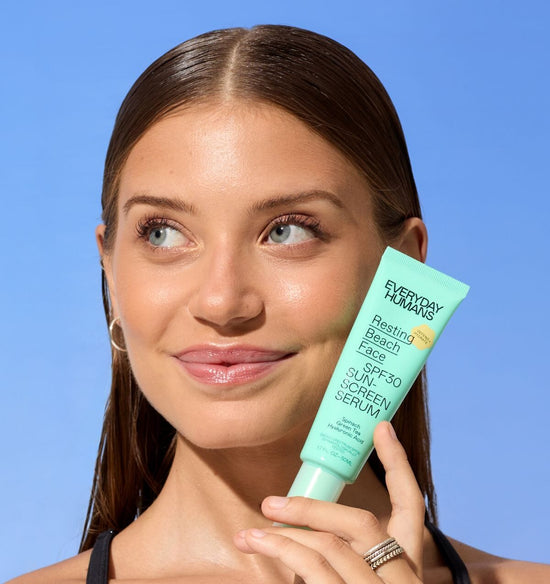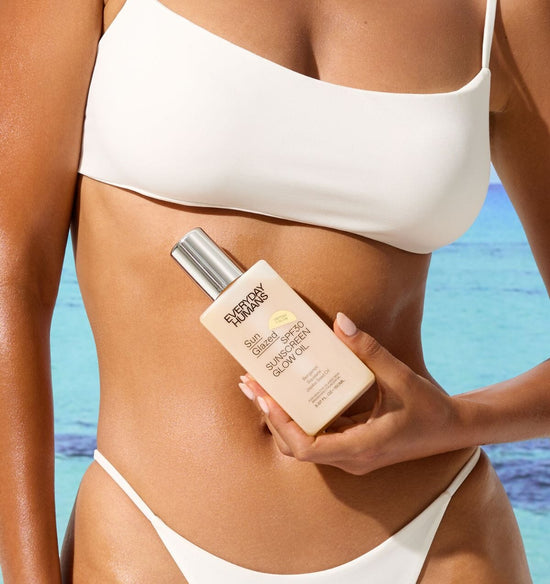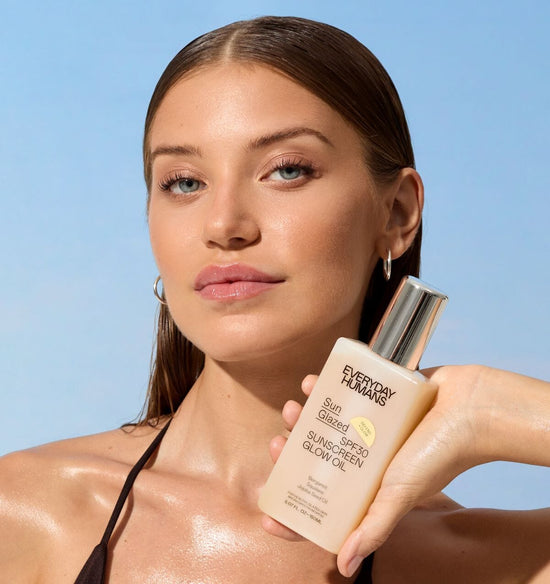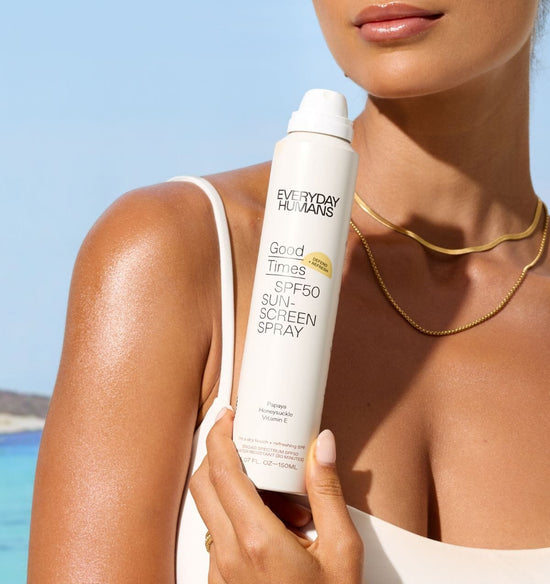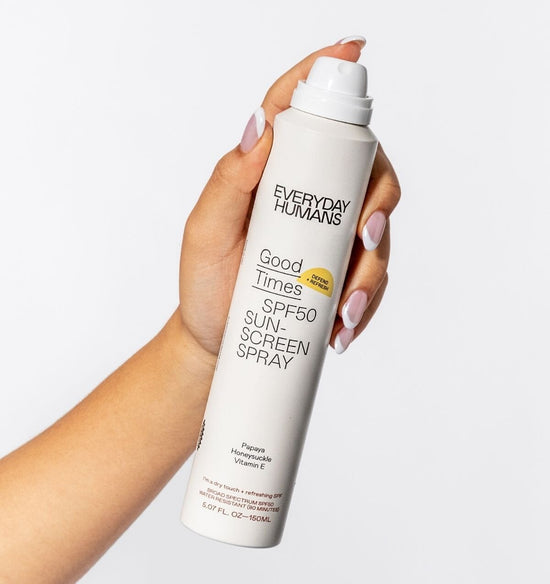In the skincare world, there’s no one-size-fits-all regimen. It doesn’t matter if a product claims to suit all skin types, or if it’s your fave beauty guru’s “holy grail.” Anytime you introduce something new into your routine, there’s always that small risk of skin irritation — whether it’s a gentle moisturizer or potent exfoliant.
Of course, the same holds true for sunscreen.

What causes sunscreen reactions?
In general, most skincare reactions are due to personal sensitivities or allergies to any of the ingredients used in these products, such as:
Added fragrance
According to the American Academy of Dermatology, fragrance is one of the most common causes of contact dermatitis — a condition that ranges from redness and blisters, to itching and inflammation. Even without allergies, synthetic fragrances are often packed with alcohol and harsh on the skin.
Preservatives
Synthetic preservatives like parabens are known to have several negative effects, such as disrupting hormones and causing skin irritation. It may seem harmless on paper, but don’t forget to watch out for them when shopping for skincare!
Certain UV absorbers
There’s a reason why certain sunscreen products are banned. In Hawaii, the recently passed Hawaii Act 104 prohibits any selling of sunscreen with oxybenzone and octinoxate. Not only can these seriously harm marine life, but it can also cause severe skin reactions and weaken your skin barrier.
How do you know if you’re allergic to sunscreen?
Mineral or chemical sunscreen, sensitivities to these are complex and can range from mild to severe. Reactions can also be linked to a range of cofactors, including sunlight or other allergens. Plus, it can be exacerbated if the sunscreen is used with some medications or other topical creams and lotions.
Some reactions occur soon after applying the sunscreen, while others (e.g. allergic reactions) can develop after a couple of days (or even years!) of using the same product. The most common signs of an allergy include: red skin, itching, swelling, rashes, and blisters with fluid. On the more severe end of the spectrum are hives, raised bumps, bleeding, scaling, and pain.
These might sound scary, but don’t worry. Cancer Council Australia notes that sunscreen reactions are pretty rare — fewer than 1% in all users! Nonetheless, it’s important to take it seriously. If you do experience a negative reaction with any product, you should immediately stop using it and consult with your dermatologist.
One of the best ways to avoid irritation altogether? Patch testing.
So what is a patch test? And why is it important?
A patch test is used to gauge if a product may cause irritation or reactions. We know how easy it is to get carried away when trying out new skincare, but it’s worth waiting it out for a bit, especially if you have sensitive skin. This way, you can spot any potential allergies before fully exposing yourself to the product (and causing even more damage).
How do you perform a patch test?
- Cleanse your skin.
- Squeeze out a small amount of sunscreen (or any skincare product) into your hand and apply onto an inconspicuous area of skin — such as the side of your neck or underside of your arm.
- Wait and see if any weird reactions occur for two days. It typically takes this long for your immune system to react to an allergen or irritant. As mentioned, this might also happen sooner depending on your own skin or severity of the allergy.

If nothing happens after that, then feel free to use the product as intended. You’re in the clear!
Now, it’s important to note that some products are more likely to cause reactions, but it doesn’t always mean that it’s harmful. Some examples are retinol and exfoliants, which may cause purging and some mild irritation as your skin adjusts to the product. However, if irritation persists, then it’s probably a sign to move on.
Safe sunscreen use
Choose your skincare wisely! With Everyday Humans, you can rest easy knowing that all our products are clinically vetted and dermatologist-approved, making them the best everyday sunscreen.
Our cult fave Resting Beach Face is a lightweight, hydrating SPF 30 sunscreen serum that is also packed with antioxidants and plant-powered goodness. For those on the more sensitive side, Rose From Above is a mineral SPF 35 sunscreen base that’s gentle and soothing. This zinc oxide sunscreen is also a great option for acne-prone skin. If you’re looking for a do-it-all body moisturizer with SPF, Oh My Bod! SPF 50 Sunscreen Lotion is your best bet. Most importantly, none of these contain any toxic ingredients like oxybenzone or octinoxate.
Shop your daily sunscreen essentials now on Everyday Humans.

